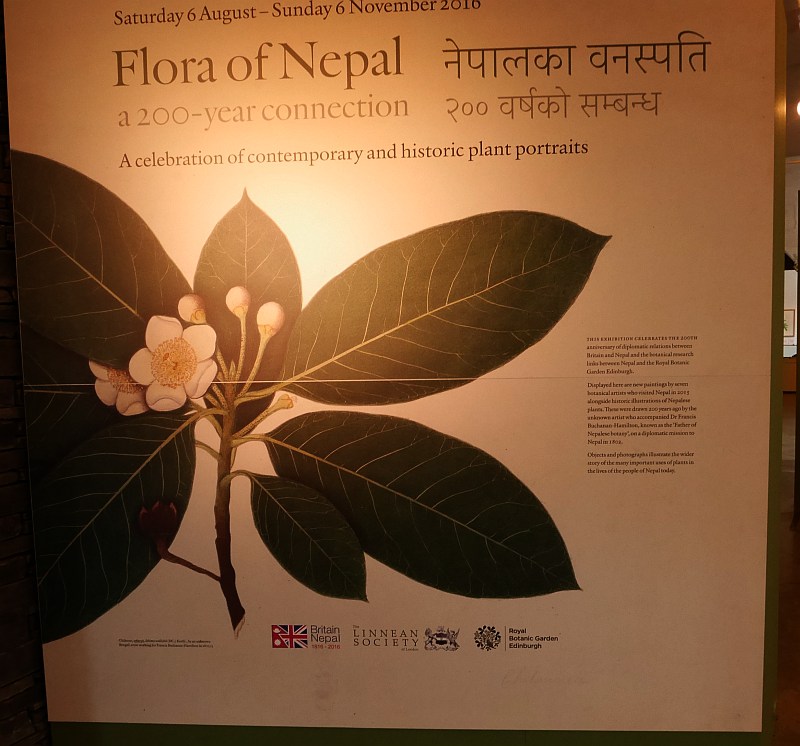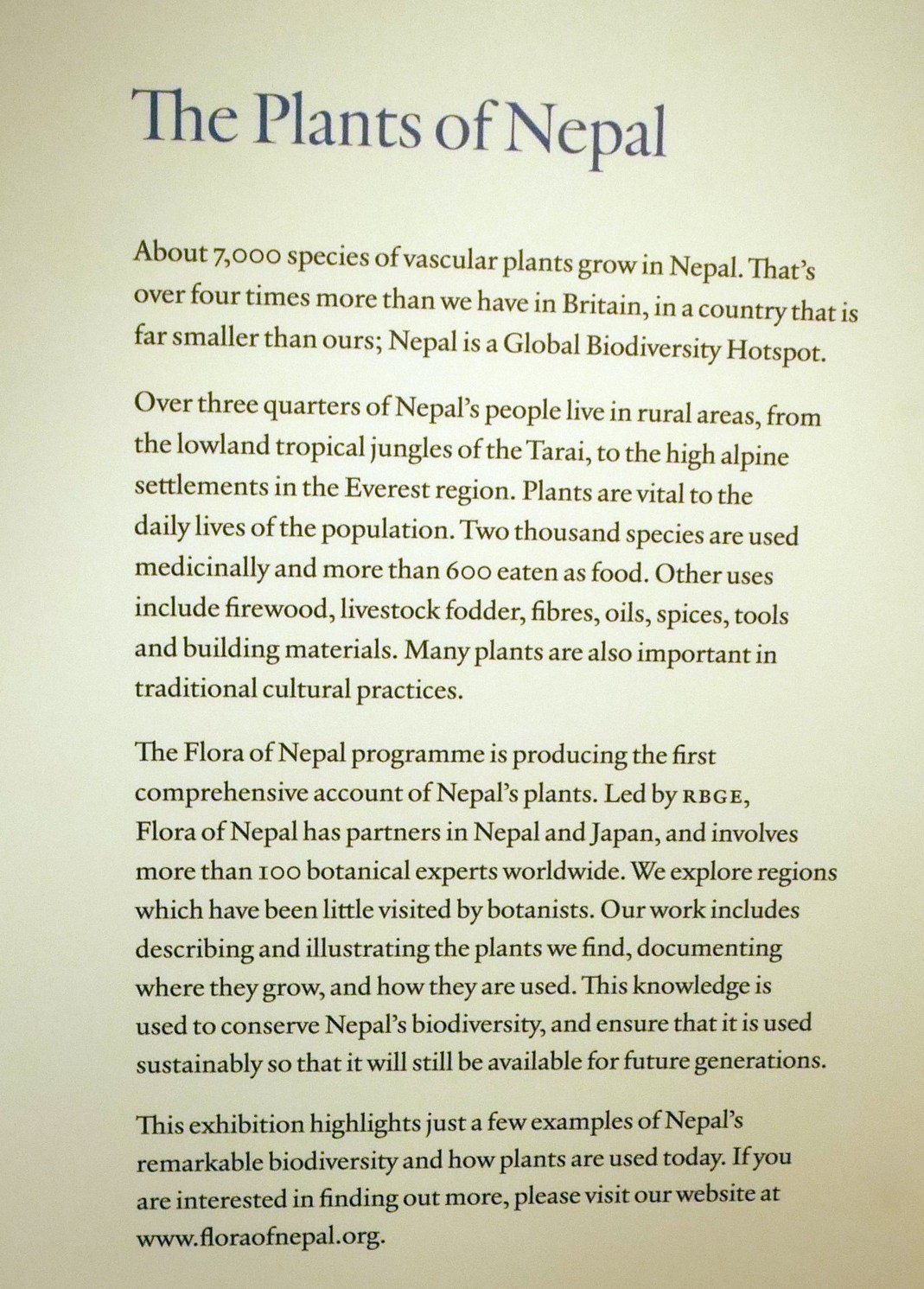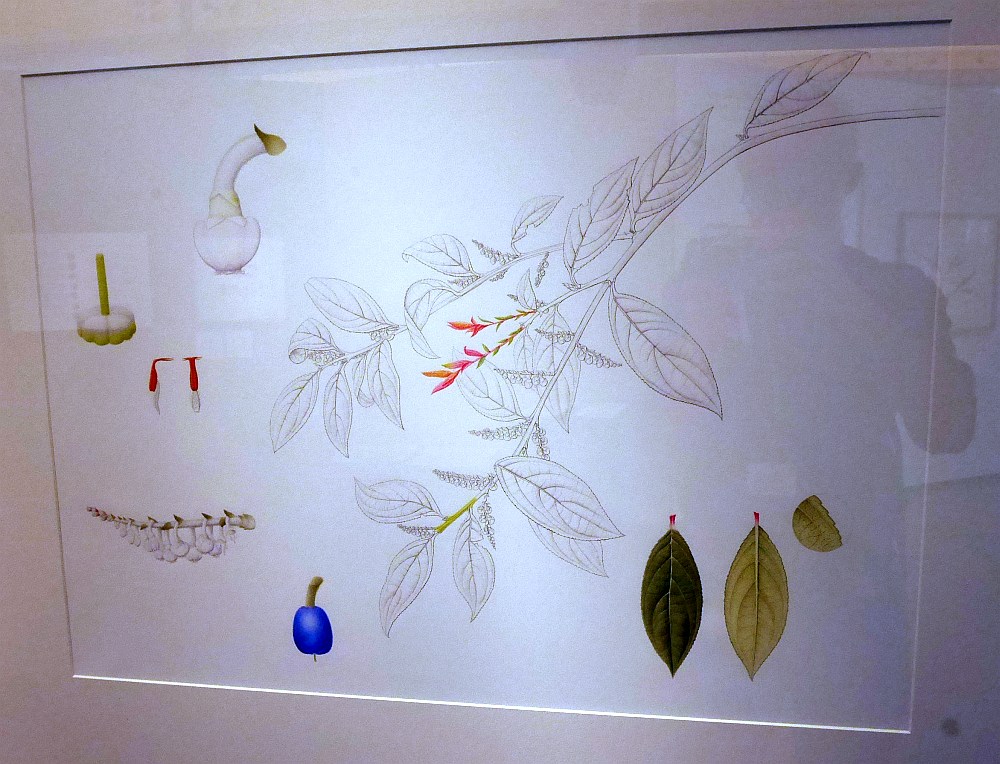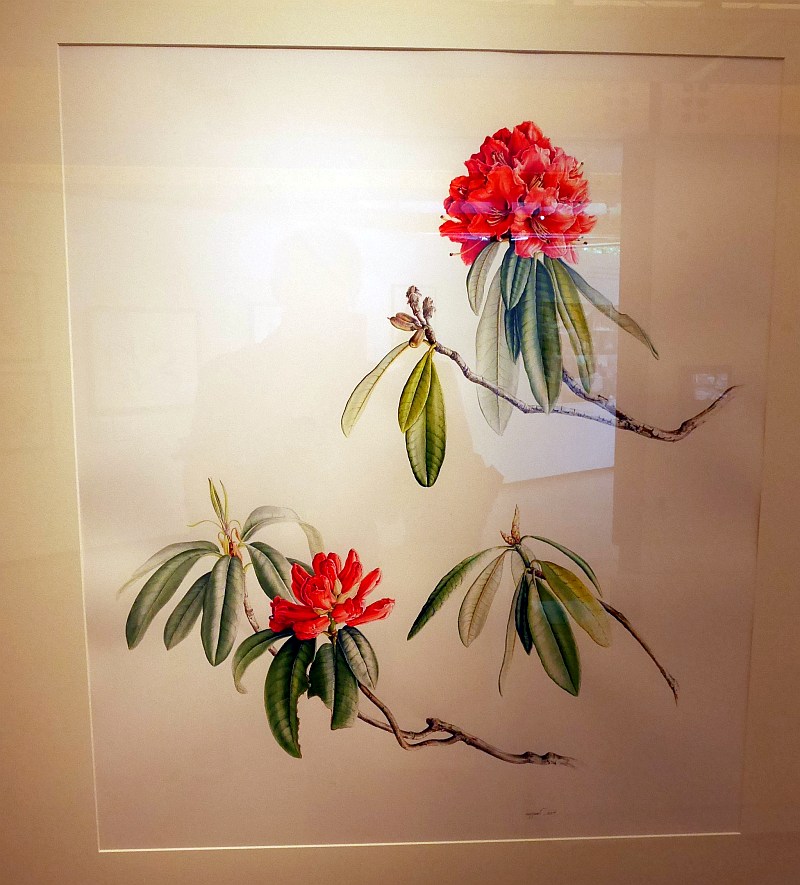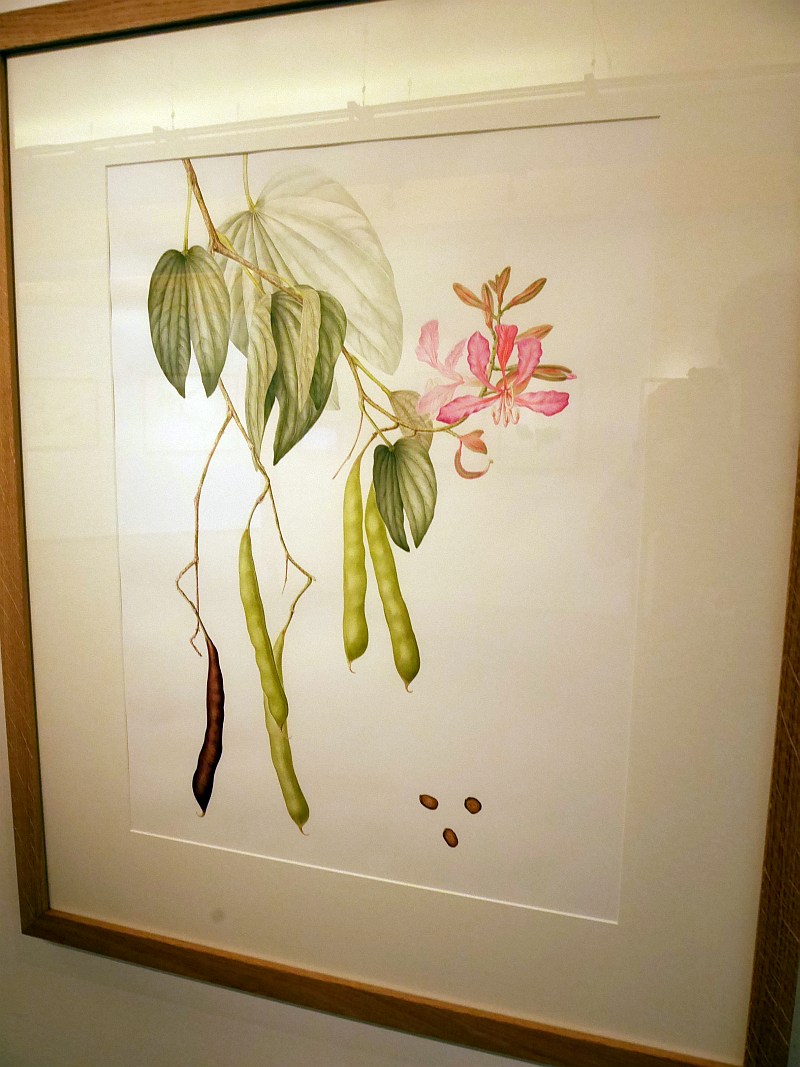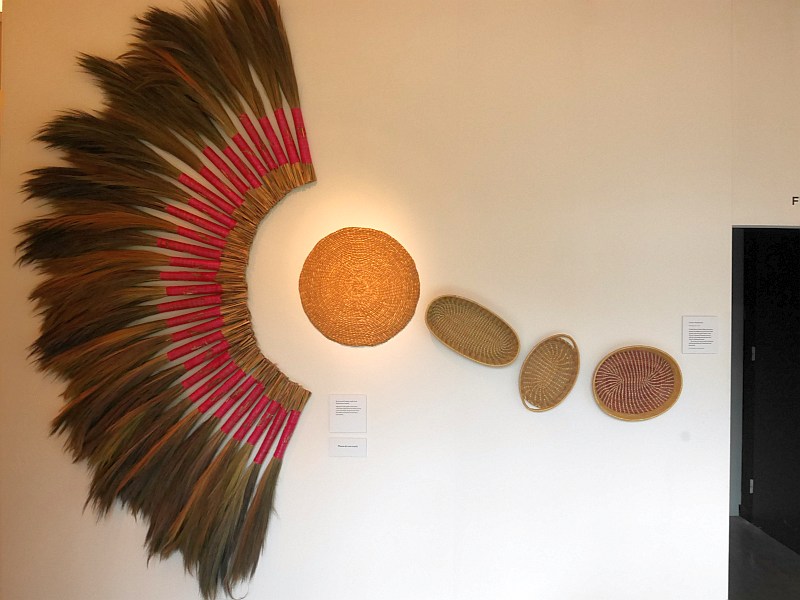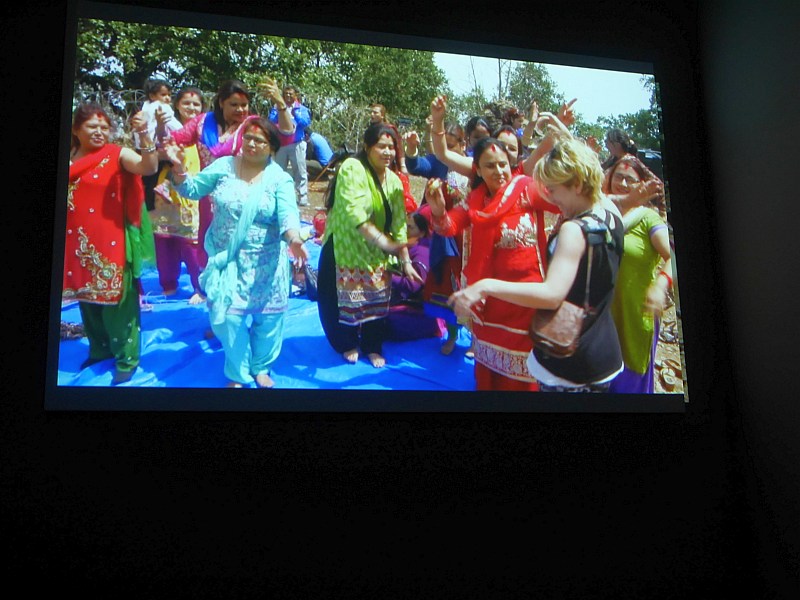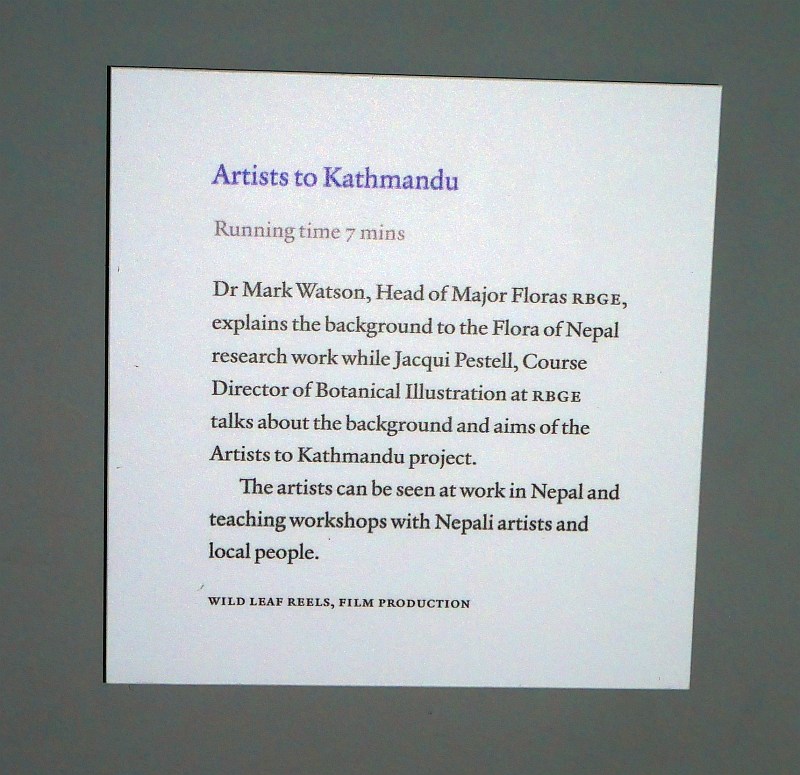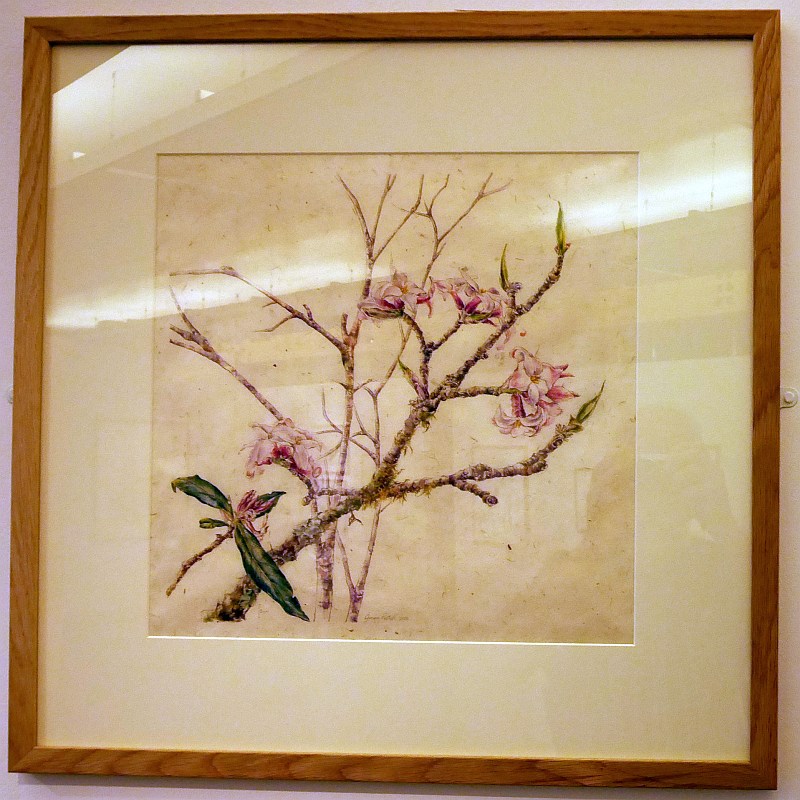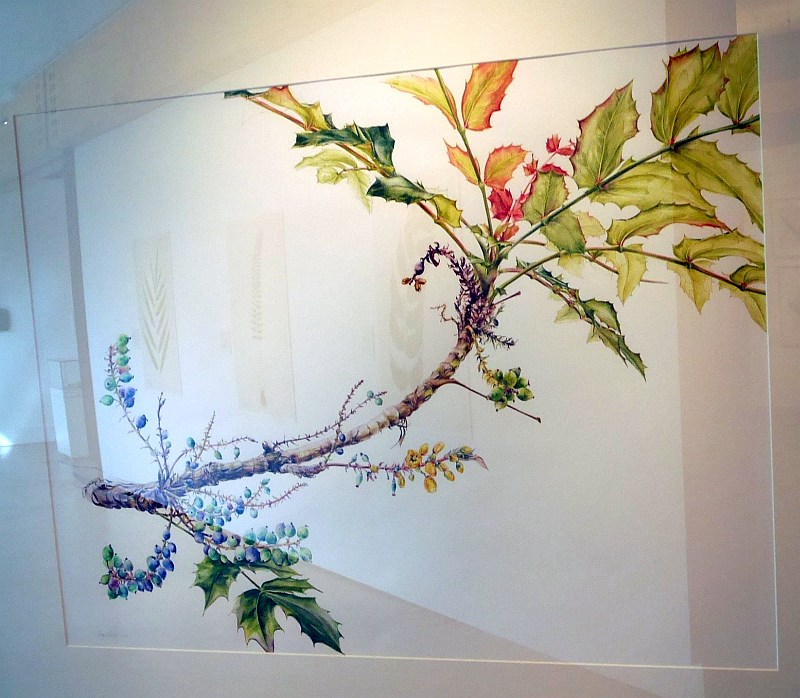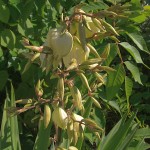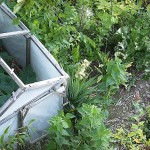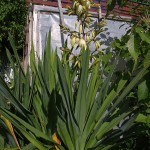When I visited the Royal Botanic Gardens in Edinburgh (RBGE) in September 2016 I was pleased to find an exhibition of portraits of Nepalese plants, many of which were edible and information was even provided on food and other uses of the plants shown! The exhibition celebrates the 200th anniversary of diplomatic relations between Britain and Nepal and the even longer botanical relationship of the gardens with Nepal (see http://stories.rbge.org.uk/archives/21610).
The exhibition features drawings made by a group of 6 RBGE artists that visited Nepal in 2015 as well as a Nepalese artist. See also http://www.mdhardingtravelphotography.com/single-post/2016/08/13/Bicentenary-UK—Nepal
My album of pictures show the edible and fibre plants on display!
Tag Archives: Royal Botanic Gardens Edinburgh
Needle and Thread salad!
Yucca filamentosa is at the top of my list of plants that I’ve grown and never expected would survive one winter let alone over 10 and finally flower, as it did in 2008…..sadly, it used up all its energy in flowering and died that winter..
My title? Needle and Thread salad, doesn’t sound very appetising, does it? Well, two of the common names of this North American plant are Adam’s needle and Eve’s thread, with reference to the needle like inflorescence and the thread-like leaf edge filaments that help separate this species from other Yuccas! It is, for obvious reasons, also known as Spanish Bayonet and Desert Candle.
Although other parts of this plant and other Yuccas were used by Native Americans, it’s the flowers you will want to try in your garden, unless you have the pollinating Yucca moth (Tegeticula yuccasella) in your area, in which case you may even get to taste the edible fruit (I haven’t)..
Knowing that this is a plant that grows on sandy soils in the wild, I planted it initially right next to the south facing wall of my house back in the mid-1990s. To my surprise, it came back year after year, but grew slowly. I then moved it next to my small home made greenhouse on the east facing side of my house in 2001. It grew slowly but steadily and then to my amazement I discovered a flowering stem and it flowered late August 2008 (see the pictures below, including the salad I made with the flowers). The flowers are delicious and I didn’t detect any bitterness as noted by some people!
This species is one of the best edimentals where it thrives, but there are a number of even more ornamental varieties worth trying including: ‘Bright Edge’, a dwarf cultivar with creamy leaf margins (awarded the UK Royal Horticultural Society’s Award of Garden Merit), Golden Sword’ which is similar to ‘Bright Edge’, but larger; ‘Ivory Tower’ has creamy white flowers tinged with green; ‘Color Guard’ with broad yellow stripes all year and red stripes in the winter.
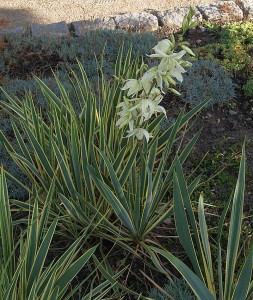
Other uses include fibre extracted from the leaves and soap from the saponin-rich roots.
…and just last month Yucca filamentosa flowers were featured in a salad I made at my walk and talk at the Royal Botanical Gardens in Edinburgh
See http://www.edimentals.com/blog/?p=6873
Edinburgh guided edimentals walk
It’s confirmed that I’ll be doing a guided edimentals (=edible ornamentals) walk at the Royal Botanical Garden in Edinburgh’s Harvest Festival at 2 pm on Saturday 17th September (free)!! Hopefully, I’ll have a few books for sale too!
I actually first grew vegetables when I was a student in Edinburgh in the late 70s when I was a student, inspired by local bicycle campaigner Dave du Feu (Spokes) who I met (both with bikes) on a train on the way up to Edinburgh…I remember him telling me about the Henry Doubleday Research Association (HDRA), the organic gardening association and how to grow vegetables intensively on raised beds by planting diagonally… Just look what he started!
See the Facebook event here:
https://www.facebook.com/events/1053863641370121/

